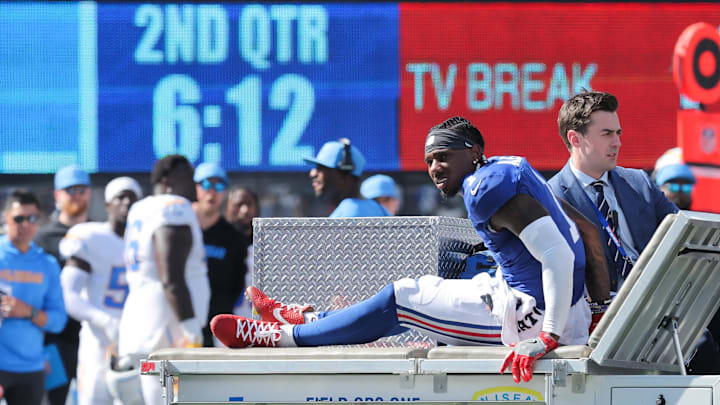When the New York Giants took down the Los Angeles Chargers in Week 4, it was supposed to be a celebration of a new era's successful beginning. Instead, the day was marred by their best player ending his season on a torn ACL. What made Malik Nabers' injury even worse was that it happened with no contact, bringing back the chorus of protests against the now-infamous MetLife Stadium turf.
MetLife Stadium has a bit of a cursed and gruesome reputation, particularly with ACL and Achilles-related injuries. Between just the Jets and Giants, there were a whopping 14 ACL or Achilles tears from 2021 to 2023. Prior to Nabers' injury, MetLife's most public recent victim was Aaron Rodgers, who went down for the year just four snaps into the 2023 season.
This, of course, begs the question: what exactly makes MetLife's surface so scary to play on? And where does it rank among the rest of the NFL's stadiums? Let's dig in.
The dangers of slit film turf
To get into what's rotten at MetLife, we need to first dive into the world of turf and artificial grass. As far as the NFL goes, the idea of artificial grass was pioneered in the 1960's by the Houston Oilers. They'd noticed that the grass of the Houston Astrodome didn't grow properly, if at all, and so subbed it out for what would become famous as "Astroturf." Thirty years later, half of the league was using the stuff for their stadiums. Turf was sturdier than grass, required less upkeep, and was generally cheaper. It eased big concerns for teams that either played in a dome, where the winters are harsher, or whose stadiums were used for other events, like college games or concerts. The relative stiffness of Astroturf also led to players getting faster.
However, that stiffness also led to a much higher rate of injuries, especially devastating ones to the lower body. And as technology developed with time, the league eventually moved to the modern turf we have today, which is largely either of the "Monofilament" or "Slit Film" variety.
The difference between the two lies in the individual blades. Slit film blades are each made up of tiny fibers and layers meant to fray and clump together overtime, while monofilament blades are just a single solid piece of turf. And while the injury concerns surrounding turf as a whole haven't stopped, the NFLPA has only officially requested the banning of slit film turf specifically. That is because the clumps that it forms make slit film turf significantly stiffer than its monofilament sibling, leading to a much more violent impact with players' lower bodies, and then to a much higher risk of extreme injury.
Slit film turf is what gives MetLife its reputation and has made it one of the locations that players hate to play in the most, alongside Ford Field in Detroit, US Bank Stadium in Minneapolis, Lucas Oil Stadium in Indianapolis, and Paycor Stadium in Cincinnati. For good reason.
But the twist is that the NFL actually replaced MetLife's turf with monofilament in 2023, likely in response to NFLPA outcry and the injury to Aaron Rodgers. In fact, slit film turf no longer exists in the league, with the Bengals having been its last user in 2024. While the majority of NFL players have complained about turf in general, since switching to monofilament, MetLife is now no longer more or less dangerous than any stadium with artificial grass.
So: where does MetLife rank among the NFL's worst places to play? Historically, pretty bad. But recently, the primary issue that it had has been largely addressed, and MetLife is no longer uncommonly hazardous. The rest might be just dependent on whether or not the NFL owners see fit to ban turf altogether.
